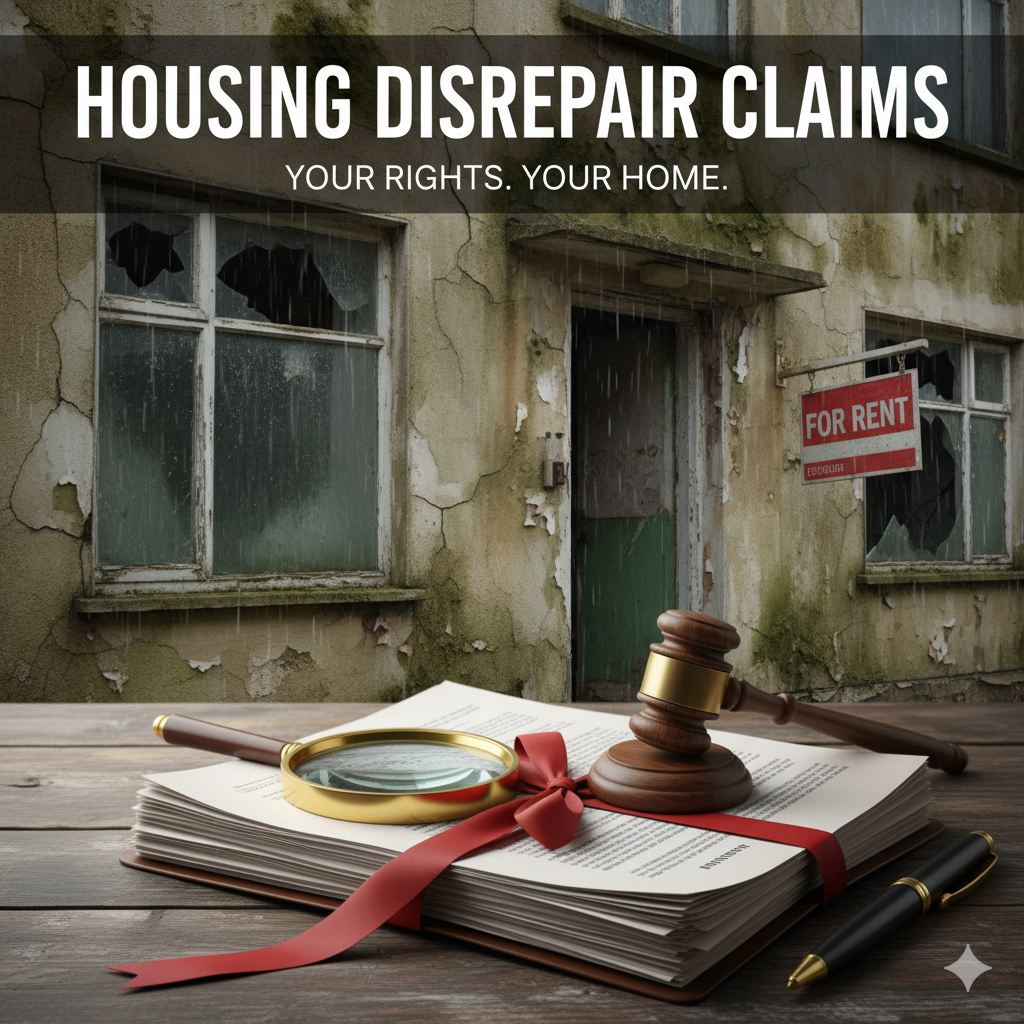Awaab’s Law is one of the most significant developments in UK housing law in recent years. Introduced in 2025 as part of the response to the death of two-year-old Awaab Ishak, the new rules place strict legal obligations on social landlords to deal with dangerous housing conditions quickly.
For tenants, Awaab’s Law offers stronger protection against damp, mould and other hazards. For landlords, it creates clear deadlines and accountability. This guide explains what the law requires, how the 24-hour rule works and what tenants can do if repairs are ignored.
What Is Awaab’s Law?
Awaab’s Law forms part of the Social Housing (Prescribed Requirements) Regulations 2025. It applies to councils and housing associations in England and Wales and sets legally enforceable timescales for responding to serious health and safety hazards.
The law was introduced after widespread concern over poor housing standards and slow repair times in the social housing sector. The aim is simple: to stop families living in unsafe homes while waiting months for landlords to act.
Although private landlords are not directly covered, the principles behind Awaab’s Law influence the fitness-for-habitation standards enforced through the Renters’ Rights Bill 2025.
The 24-Hour Rule for Emergency Hazards
Under Awaab’s Law, social landlords must start emergency repairs within 24 hours of becoming aware of certain hazards. This includes conditions that pose an immediate risk to health or safety.
Examples of emergency hazards include:
- Black mould spreading rapidly
- Leaking ceilings or burst pipes
- Faulty electrics posing a risk of fire
- No heating during winter
- Structural problems affecting safety
- Severe damp or condensation affecting breathing
The landlord must not simply inspect the problem. They must begin work to remove or reduce the hazard.
Timeframes for Other Serious Disrepair
Not all hazards fall under the 24-hour rule. Some require investigation before repair work begins. Under Awaab’s Law, landlords must:
- Investigate serious hazards within a short, reasonable period
- Provide tenants with clear updates
- Confirm any repair work needed
- Complete the repairs within an appropriate timescale
The exact timeframe depends on the nature of the problem, but long delays or repeated temporary fixes are no longer acceptable.
What This Means for Tenants in 2025
The new law gives tenants stronger protection than ever before. Social landlords must now treat damp, mould and other hazards as urgent issues, not routine maintenance problems.
Tenants benefit from:
- Faster response times
- Clearer inspection requirements
- Stronger enforcement powers for councils
- Written communication from landlords about repairs
- A strengthened ability to challenge poor living conditions
If a landlord fails to meet these duties, enforcement action may follow, and tenants may be able to bring a legal claim.
How Awaab’s Law Is Enforced
Local authorities now have greater powers to step in when landlords fail to act. They can:
- Issue improvement notices
- Require landlords to complete repairs within a set deadline
- Impose penalties for non-compliance
- Carry out emergency repairs and charge the landlord
Failure to comply with Awaab’s Law can also be used as evidence in housing disrepair claims.
Does Awaab’s Law Apply to Private Landlords?
Private landlords are not directly covered by the 24-hour rule. However, the Renters’ Rights Bill 2025 strengthens the Homes (Fitness for Human Habitation) Act and reinforces expectations around repair times, especially for mould, damp and safety risks.
Local councils now have more power to intervene in private rented homes too. This means that even though the law applies to social housing, the standards it sets are becoming the benchmark for the private sector.
What Tenants Should Do if a Landlord Ignores Repairs
If you report a repair issue and the landlord does nothing, follow these steps:
- Send written notice explaining the problem
- Keep copies of all communication
- Take photos and video evidence
- Report the issue to the council if it’s a serious hazard
- Seek legal advice if the landlord continues to ignore the problem
For social housing, any failure to meet the 24-hour rule or the following investigation deadlines should be raised immediately.
Can You Make a Housing Disrepair Claim?
Yes. A tenant may be able to bring a claim if:
- The landlord failed to respond within the time limits
- The conditions caused health problems
- Damage occurred to belongings
- The property became unsafe or unusable
- The disrepair continued for weeks or months
Compensation can cover inconvenience, distress, health impacts, damage to property and loss of enjoyment of the home.
Why Awaab’s Law Matters in 2025
Awaab’s Law is more than a repair deadline. It changes the culture around social housing maintenance. Landlords can no longer downplay or ignore mould and damp. Tenants now have a clear legal framework to rely on when challenging unsafe conditions.
The law also increases transparency. Landlords must document inspection times, repair actions and communication with tenants. This provides evidence if the case goes to court.
Frequently Asked Questions
What counts as an emergency under Awaab’s Law?
Any hazard posing an immediate risk to health or safety, including severe mould, leaks, dangerous electrics or structural issues.
Do landlords need to fix everything in 24 hours?
No. They must start emergency repairs within 24 hours, but some issues require longer investigation and repair.
Can I take legal action if my landlord ignores Awaab’s Law?
Yes. Failure to meet the deadlines may support a housing disrepair claim or council enforcement.
Does this apply to private housing?
No, but private landlords must still meet strict fitness-for-habitation requirements and respond to hazards quickly.
Will I be rehoused if the property is unsafe?
This depends on the severity of the hazard. Councils can intervene in emergencies.





